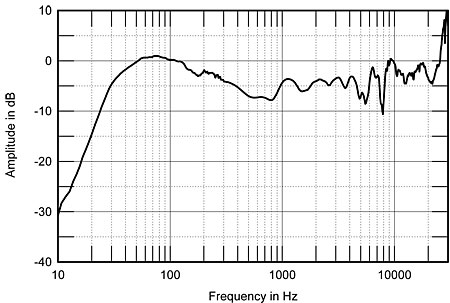Then almost all broadband equalization attempts are done incorrectly because:
A. We don't hear with a single microphone, we have a head with two ears.
B. EQ systems don't account for the directivity of the speaker.
Sounds to me like an EQ'd frequency response, particularly in the higher frequency range, is merely fools gold. As long as it provides a smooth graph on paper afterward, then you guys can rest a bit easier at night, while the direct sound of your speaker moves further away from its anechoic response.
Most, but not all, EQ systems rely on a usually proprietary multipoint averaging scheme. Partly, that helps deal with the two ears thing, partly with other measurement issues of the complex sound field in a room.
Speaker directivity is only perceived indirectly at the listening position based on room reflections. We would only hear it directly only if we moved around in the room. EQ systems aim at measuring the result of that direct plus reflected sound. Speaker directivity is a useful comparative speaker performance measure, but in doing Room EQ, we are not attempting to measure speaker performance. We are measuring speaker plus room performance combined, which can alter anechoically measured directivity, sometimes dramatically.
Mikes do not have the same measurement problems in an anechoic chamber where there are no reflections by definition. The downward slope we see as desirable in the in-room target curve is not necessary anechoically, because there are no room reflections to affect response. But, of course, the degree of downward slope that is desirable in the room varies depending on the room, its cubic volume, reflective character, etc.
In a real room, unlike an anechoic chamber, the HF will be dominated by comb filtering because of the added reflections, provided you look at the output with sufficiently unsmoothed 1/X octave resolution. I agree with Wayne, Amir's excellent paper on this makes it clear.
Good EQ should not be attempting to follow all those micro, comb filtered peaks and valleys. It should rely on the psychoacoustics of the ear's ability to integrate and smooth those frequency variations, as Amir describes. However, like much of psychoacoustics, the measurement of the phenomenon is approximate. The smoothing of the comb filtering response done by EQ tools is also approximate. It never disappears in the room post-EQ, unlike in the anechoic chamber. But, well a designed EQ and target curve can provide an integrated sonic envelope for the micro variations of the comb filtering.
We do not really know exactly what a speaker will sound like in an anechoic chamber, nor do we wish to replicate that sound in our rooms. Anechoic frequency response is useful in designing and purchasing speakers, the key being consistently smoother frequency response is deemed better, almost universally. I do not know why anyone would meticulously override smoother response provided by EQ with peaks, valleys, frequency shelves, etc. in order to simulate an anechoic response which is not consistently smooth. But, to each his or her own.



